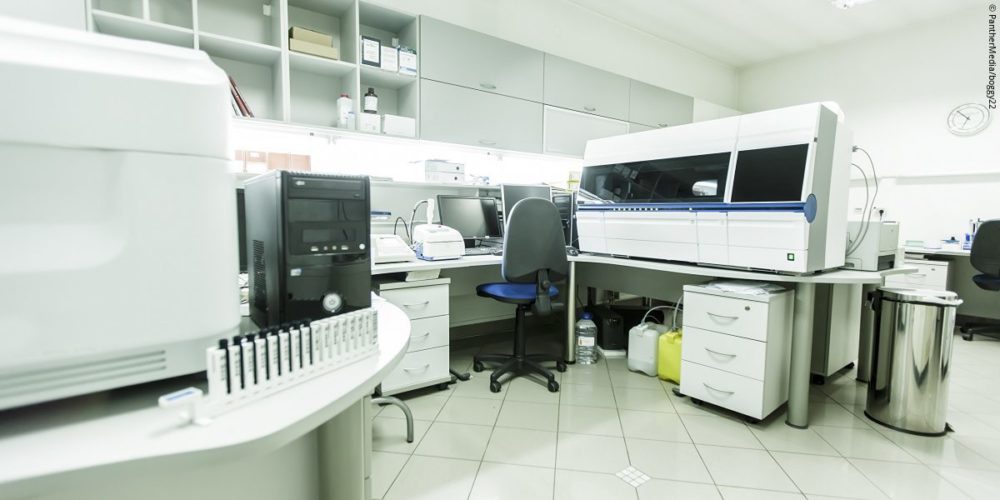2020/9/3 11:27:53
Diagnostics, biomedical research, screening active ingredient candidates - laboratories perform many functions and must be flexible. Growing and evolving healthcare demands mean labs have to process an increasing number of samples. Although modern laboratory information management systems can already support high-throughput, a smart and connected laboratory environment can make things even more efficient. Unlike research laboratories where several people often handle the same series of tests or access the same material, giving way to problems. For quality control purposes, tests must sometimes be repeated or require parallel testing to validate results. Manual sample and culture management is a likely source of error, especially if specimen feature handwritten identification. Intelligent devices are actively involved
Monitoring chronic diseases like diabetes or biomarker-based testing are just two reasons for an increasing number of samples. In the wake of the coronavirus pandemic, public awareness of diagnostic laboratories and their important work has skyrocketed. The attention centers on testing capacity for PCR and pool testing to detect an infection with SARS-CoV-2, the virus that causes COVID-19. The point is to provide quick test results to persons with suspected infection and subsequently interrupt transmission and break the chain of infection. Laboratory automation equipment can easily manage these standardized diagnostic tests. Machines are filled with samples and carry out the laboratory processes, with humans analyzing the results.
Both laboratory settings benefit from digitalization and connected devices. In the diagnostics scenario, patient data management, internal laboratory logistics optimization, and accurate identification of samples and test results are paramount. Research laboratories are especially interested in how data from test series can be collected, managed, and interpreted.
In a MEDICA-tradefair.com interview, Dr. Felix Lenk of the Dresden University of Technology (TU Dresden) describes the "five-tiered approach to digital transformation" and outlines the expansion of digital infrastructure in laboratories in five steps. The process starts with sensors that record data, entails the management of data with organizational structure in databases, and ends with graphics that make the data human-interpretable. Lenk and his "SmartLab Systems" research group study how point solutions can become a smart networking laboratory. "For us, the SmartLab, also called the laboratory of the future, is a term that sums up automation, digitalization, and miniaturization," says Lenk. "Our goal is to bridge the gap between biology and technology."
The research group collaborates with other Institutes at the TU Dresden and the University Hospital Dresden to implement solutions that help make smart labs a reality. This includes floating sensors that wirelessly transmit data from within test tubes, or the PetriJet platform, which automates high-throughput screening of multiple cultures in petri dishes.
The platform is used to screen for new antibiotic candidates by way of zone of inhibition test. "The platform can process culture dishes individually, open them, pour and cultivate the contents in a new culture dish. It also takes images of the process flow under different light exposure and from different perspectives and measures the zone of inhibition," explains Lenk. If done manually, the respective series of tests take a long time because it involves working with many different cultures.
Yet it takes point solutions before the laboratory is completely connected. At the MEDICA 2019 trade fair, the Helbing Technik Wil AG showcased an example that incorporates smart sensor technology, image recognition, and augmented reality (AR) into a typical laboratory process as part of the MEDICA LABMED FORUM: "We wondered how pipetting could be done in the future? How can we use technology to support pipetting accuracy," says Lynda Metref in a MEDICA-tradefair.com interview. "With the help of augmented reality (AR), we can superimpose process details to assist the user."
The system would be able to achieve multiple objectives: Users could get job instructions by superimposed procedures for particular assays. Image recognition and object tracking from the user's perspective can help prevent errors in the laboratory if the process is stored electronically as a protocol and the sequence of steps is monitored. Conversely, you could also document the user’s steps to automatically create a protocol.
One thing these use cases have in common is that they ease the burden on the user, who can subsequently focus on other important work aspects. So far, the smart pipetting system is a demonstrator that still needs to be advanced for series production. Yet it shows the type of equipment that will shape the future of laboratories: "Smart devices will increasingly support the various functions of laboratories, making life in the lab easier and results more accurate and reliable," says Fabian Kappeler from Helbling Technik Wil AG.
Lack of standards thwarts connectivity
Despite great solutions, for now, most laboratory devices will continue to operate separately because "many devices are incompatible because of the lack of standards. Each application requires individual driver programming," says Felix Lenk. To ensure connectivity and a network approach, standards are currently being created, including efforts by the OPC-UA initiative by SPECTARIS e.V., or the SiLA Consortium (Standardization in Lab Automation) in Switzerland.
Modern laboratories have already seen some digital transformation. Once we are finally ready to connect all devices, it is imperative that this step eases the burden on laboratory technicians to allow them to focus on those tasks that require human manual intervention. Meanwhile, automation can be implemented for other tasks, such as process monitoring or documentation of test protocols and databases. The improvement of laboratory data management and data transmission not only helps ensure the quality and validity of laboratory test results but also safeguards diagnostics and patient care.
(From admin)